Individuals with dementia may not be able to remember what happened yesterday or even five minutes ago, but they can remember their past with surprising clarity. Building a memory box for your loved one is a great way to engage the memories from their past and connect with them, says Barbara Harrison, Executive Director of Bridges® by EPOCH at Westwood, a memory care assisted living community in Westwood, MA.
“A memory box provides tangible examples of events and people that can be used to start conversations and spark memories,” Barbara says. “It’s an excellent tool for family members, friends and care staff to engage with their loved one in a healthy, meaningful way. Even if he or she may not remember the details exactly, the object will stir happy memories and provide enjoyment in that moment.”
Barbara says memory boxes are a useful therapy at Bridges® by EPOCH at Westwood because it allows care team members an immediate, easy way to engage with residents, no matter how little or long the resident has been living with them. “Our mission is to build bridges that span the gaps created by dementia, and memory boxes are a wonderful link to the past in the present.”
If your loved one has been diagnosed with dementia, or is already progressing through their memory loss journey, Barbara recommends making a memory box that you can use to interact and engage with them. “Memory boxes can be created for any reason or any occasion,” she says. “For example, now that we’re entering the holiday season, you might want to put together a Thanksgiving or Christmas memory box. You can also create memory boxes that emphasize a person, an event or other themes that resonate with your loved one.”
Memory boxes can be used throughout the dementia journey, as physical objects can engage all of your loved one’s senses. “As the disease progresses, senses like hearing and touch will become more and more important for your loved one,” says Barbara. Your memory box may also inspire your loved one to create a box of their own centered around a meaningful event or memory.
“Memory boxes can also provide a unique insight into your loved one’s life,” Barbara says. “As you’re searching for items to place in the memory box, you may find special items that you had forgotten or didn’t realize your loved one had. In other words, the memory box can be a trip down memory lane for you as well.”
Tips for Creating a Memory Box
Find a suitable container. This can be anything you like: a shoebox, a plastic tub, a basket or even a dresser drawer. As long as it’s sturdy, easy to store and easy to lift, it will make a great place to store those meaningful memories. Be sure to choose something that can handle some wear and tear, since its primary purpose is to be handled. Many family members choose to decorate the memory box to make it stand out and become even more meaningful.
Find meaningful objects. The next step is, naturally, finding objects to place into the memory box that have meaning and memory attached to them. They can be objects that reflect your loved one’s interests and hobbies (like a baseball, or measuring spoons or a ball of yarn), or they can be items that have personal significance, like a scarf your mother always wore to church, or a baby toy from childhood. As long as the item is linked to a memory, you’re good to go.
Avoid unhappy memories, if possible. Memories aren’t always happy. Do your best to avoid items that could bring up unwanted or unhappy memories. You may inadvertently spur sad memories even with a “happy” item, so do your best – you can always remove an offending object if it turns out to be unpleasant.
Choose items that are safe and replaceable. The delicate Dresden china figurine that always sat on your family mantel would definitely spur memories, but could also break. Likewise with your Mom’s trusty kitchen knife – it’s too sharp and dangerous to add to the box. Avoid items that are sharp, heavy, potentially dangerous or precious.
Pick items that stimulate different senses. Touch is a wonderful sense that helps spur memory. Consider items with different textures and fragrances. Don’t forget about the power of music and sound – while a CD might not spur memories just sitting in the box, it’s something that can be played to engage your loved one.
Be prepared to gently encourage your loved one as needed. It’s possible that your senior might not understand the importance of certain objects right away. Consider labeling items with cues and clues. You can also include a notecard or a list in the box that details all the items along with a short description of why they are meaningful for your loved one.
Ideas for Items to Include in a Memory Box
What can you put in a memory box? Your only limit is your imagination, so be creative. Here are some ideas to get you going:
- Family photos (be sure to include names and date on the back of each)
- Copies of favorite books
- Sports-related memorabilia, such as a tennis ball, baseball cards, catcher’s mitt, etc.
- Different fabrics that might relate to memories or may just be soothing
- Items from nature, like acorns, autumn leaves, dried flowers, etc.
- Favorite scents in lotion, soap, perfume or potpourri form
- Artwork from children or grandchildren
- Gardening items like seeds or gloves (just don’t choose sharp tools)
- Souvenirs from vacations past, like seashells, commemorative spoons, etc.
- A favorite recipe
- A musical instrument
- Newspaper clippings from the past
- Favorite pieces of jewelry (as long as they aren’t heirlooms or something irreplaceable)
- A favorite article of clothing
- Photos of items that can’t otherwise go in the box (like heirlooms or breakable items)
The exciting part comes after you’ve completed the memory box – handing it off to your loved one and watching them handle each item. Encourage your loved one to share the special memories that spring to mind. You may find that the memories your loved one remembers are different from your own, which can inspire sharing and conversation that you can store in your own internal memory box for years to come.
Exceptional Care & Fulfilling Lifestyle
Bridges® by EPOCH at Westwood provides memory care assisted living that is comfortable, positive, safe and engaging. Exclusively dedicated to caring for those with Alzheimer’s disease and other forms of dementia, our community offers a wellness-focused lifestyle that promotes dignity and individual preferences. Our memory care professionals receive specialized and ongoing training designed to help residents maximize their independence in a secure, calm environment – enriching the lives of our residents every day.
Inspiring Programs for All Stages
No matter what level of care or service is needed, residents and families can rest assured that our care and life enrichment programs address the various stages of memory decline, allowing residents the opportunity to age in place.
Dedicated Memory Care
At Bridges® by EPOCH at Westwood, our services are designed to recognize and adapt to the unique challenges and individuality of each resident, while ensuring comfort and safety. We believe in a full-service approach to care and provide a high level of personalized attention for residents in various stages of memory loss.
Contact us today to learn more.


